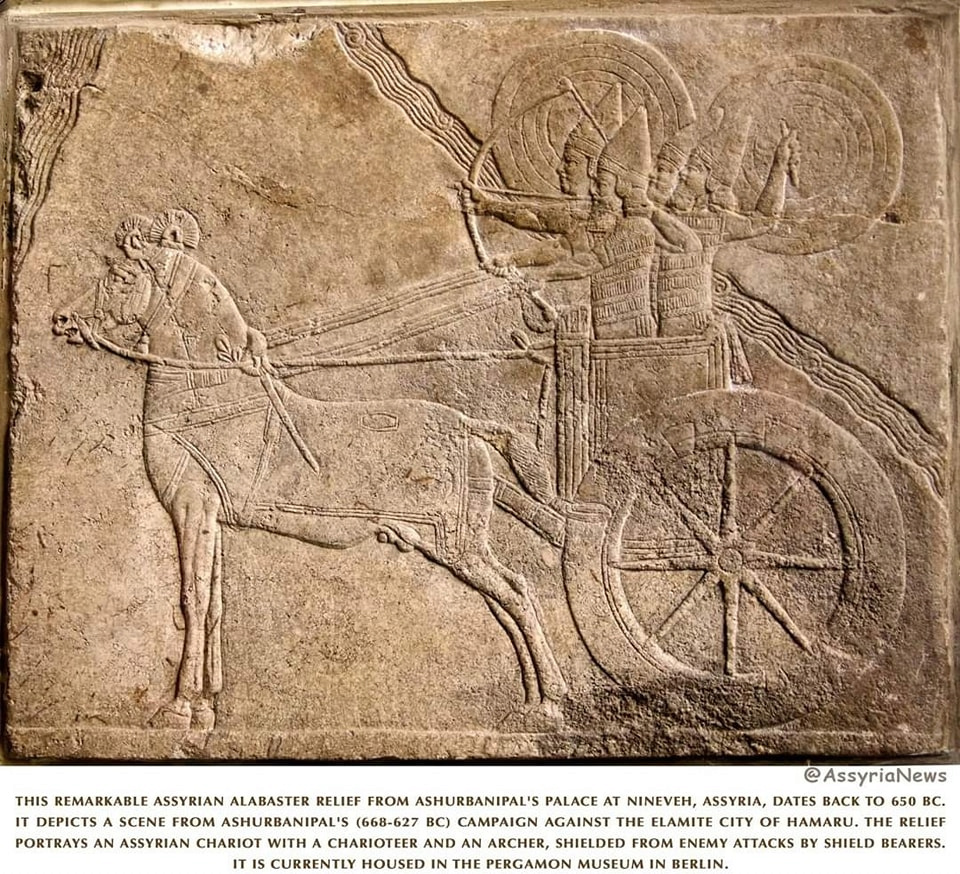Assyrian inscription in Ashurbanipal's palace

This magnificent Assyrian alabaster relief from the palace of Ashurbanipal in Nineveh, Assyria, dates back to 650 BC. It depicts a scene from Ashurbanipal's (668-627 BC) campaign against the Elamite city of Himara. The relief depicts an Assyrian chariot with a charioteer and an archer, protected from enemy attacks by shield-bearers. It is currently in the Pergamon Museum in Berlin.
Ashurbanipal Palace is an ancient historical palace located in Nineveh in northern Iraq. It was built by the famous Assyrian king Ashurbanipal at the beginning of his reign, and currently there are remains of it, including walls, rooms, and places that remain until today.
In the partial layout of this palace, we can find a large, long, rectangular room on the western side called (W), which is probably a courtyard, and can be accessed through three doors as in Sennacherib’s palace. However, the rectangular room (M), known as the Babylonian Room, was not A throne room, since from the time of Sennacherib onwards, the Assyrian palace was no longer represented in a room that the king entered, as was the case during the reign of King Ashurnasirpal II, in a sacred capacity, and there were no large wall sculptures decorated with the tree of life and the jinn, and the sculpture on the walls moved from the legendary sculptures that The palace of Ashurbasirpal II was strongly dominated by the heroic sculptures of the king and historical works during the reign of King Ashurbanipal, and this can be seen from the rooms that can be entered from every side, a door, a palace, a courtyard, And the wall sculptures that included the illustrated annuals, all of which were used only to show the king’s historical achievements.
Source: websites

